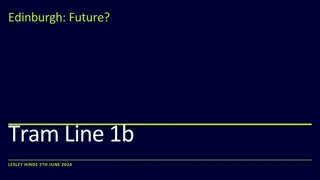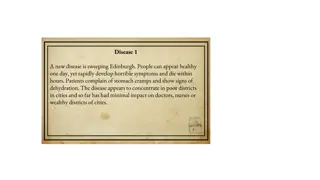Alcohol Interlocks in Drink Driving Prevention
Alcohol interlocks are being increasingly used as a preventive measure for drink driving in various countries, including the UK and European nations. These devices are effective in reducing incidents of drunk driving by requiring convicted offenders or professional drivers to use them as part of their punishment. The use of alcohol interlocks provides flexibility in administering punishments and can be more preventive than disqualification alone. However, to ensure the continued effectiveness, accompanying rehabilitation courses are recommended.
Download Presentation

Please find below an Image/Link to download the presentation.
The content on the website is provided AS IS for your information and personal use only. It may not be sold, licensed, or shared on other websites without obtaining consent from the author. Download presentation by click this link. If you encounter any issues during the download, it is possible that the publisher has removed the file from their server.
E N D
Presentation Transcript
Alcohol Interlocks in prevention and the enforcement of drink driving law Safe and Sober Edinburgh July 2017 Richard Allsop University College London
The alcohol interlock ... is long-established in North America and now in use or being trialled in many European countries including the UK e g for: mandatory use by convicted offenders voluntary use in commercial transport mandatory use in professional driving with vulnerable passengers
Alcohol interlocks used with the mix of offenders Requirement to use an alcohol interlock for a time is an additional form of punishment in itself But it also provides flexibility in the use of other punishments allowing more consideration of the situation of each offender e g effect of disqualification differs among those offending similarly
Alcohol interlocks used with the mix of offenders Requirement to use an alcohol interlock is more preventive of drink driving than disqualification But used by itself the preventive effect does not persist when the user is free to drive without the interlock So its use can well be accompanied by a rehabilitation course
Alcolock Barometer 2008 Voluntary basis Pilot project Legislation under discussion Legislation in force
Alcolock Barometer 2009 Voluntary basis Pilot project Legislation under discussion Legislation in force
Alcolock Barometer 2010 Voluntary basis Pilot project Legislation under discussion Legislation in force
Alcolock Barometer 2011 Voluntary basis Pilot project Legislation under discussion Legislation in force
Alcolock Barometer 2012 Voluntary basis Pilot project Legislation under discussion Legislation in force
Alcolock Barometer 2013 Voluntary basis Pilot project Legislation under discussion Legislation in force
Alcolock Barometer 2014 Voluntary basis Pilot project Legislation under discussion Legislation in force
Alcolock Barometer 2015 Voluntary basis Pilot project Legislation under discussion Legislation in force
Alcolock Barometer 2016 Voluntary basis Pilot project Legislation under discussion Legislation in force On hold
Alcolock Barometer 2017 Voluntary basis Pilot project Legislation under discussion Legislation in force On hold
... so its not plain sailing Many possibilities for interlocks are being explored but issues are arising: motivation of the judiciary cost of the interlocks and who pays procedure for and costs of using log data from interlocks to support users and to inform policy public perception of users
Where to go from here? Progress use of alcohol interlocks and rehabilitation courses with offenders to achieve more tailored penalties and reduce reoffending Encourage use of alcohol interlocks for prevention Harmonise alcohol interlock technology, require fittability and improve convenience of use
Thank you for your attention www.etsc.eu






















